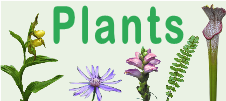







Loading profile. Please wait . . .
Cuscuta harperi Small
Harper's Dodder





Federal Protection: No US federal protection
State Protection: Endangered
Global Rank: G2G3
State Rank: S1
Element Locations Tracked in Biotics: Yes
SWAP 2015 Species of Greatest Conservation Need (SGCN): Yes
SWAP 2025 Species of Greatest Conservation Need (SGCN): Yes
2025 SGCN Priority Tier: Highest Conservation Concern
Element Occurrences (EOs) in Georgia: 4
Habitat Summary for element in Georgia: Altamaha Grit outcrops; granite outcrops; often with Liatris microcephala as host
Parasitic, annual, herbaceous vine with brittle, yellowish-orange, thread-like stems, twining around and attaching to host plants with tiny peg-like suckers, often forming loose mats and tangles on other plants. Its leaves are reduced to tiny, orange, alternate scales. The flower clusters lack bracts at the base. Flowers are 0.9-1.4 mm long, with 4 green sepals and 4 white petals with upturned tips. The fruits are round capsules, less than 1 mm long, slightly flattened on top.
Field Dodder (Cuscuta pentagona, synonym: C. campestris) is common on rock outcrops; its yellow stems are usually attached to stems of Stone Mountain Daisy (Viguiera porteri, synonym: Helianthus porteri). Field Dodder flowers are larger than those of Harper’s Dodder, 1.5 - 2.5 mm long, with 5 sepals and 5 petals. The sepals are strongly overlapping at the base, forming 4 or 5 strong angles at the sinuses of mature flowers (this trait is obscured in fruit).
Common Dodder (Cuscuta gronovii) has coarse, stringy stems and its flowers have 5 petals and 5 sepals.
Compact Dodder (Cuscuta compacta) has coarse, stringy stems and greenish-white flowers with rounded bracts tightly enclosing the base of the flower but no pedicels.
None in Georgia.
Piedmont granite outcrops and Coastal Plain Altamaha Grit outcrops.
Harper’s Dodder usually parasitizes Pineweed (Hypericum gentianoides) on granite outcrops, and Small-headed Blazing Star (Liatris microcephala) and Rayless Goldenrod (Bigelowia nudata) on Altamaha Grit outcrops. Research on the common species, Field Dodder (Cuscuta pentagona), has shown that young Dodder plants locate their hosts by responding to airborne chemicals given off by the host plant. When a young Dodder plant germinates from seed, it must quickly find a host plant because it lacks roots to take up water and minerals from the soil and has no chlorophyll in its stems and leaves to make food. When the young Dodder plant detects its host, it grows quickly in that direction and coils around the stem or leaf of the host, embedding tiny suckers called haustoria into the vascular tissue of the host. The Dodder stem between the ground and its connection to the host plant then withers away. New Dodder stems grow from the coils, rapidly expanding to another host plant. Harper’s Dodder is an annual that flowers and sets seeds, but nothing has been reported on pollination and seed dispersal for this species.
Surveys are best conducted during flowering (late June–September) and fruiting (August–October) since flowers or fruits are required for identification.
Approximately 20 populations are known from Georgia and Alabama.
Destruction of granite and sandstone outcrops by quarrying, trash dumping, and off-road-vehicle use. Competition from invasive exotic pest plants.
| Threat 1 | Threat 2 | Threat 3 | |
|---|---|---|---|
| General Threat | Natural system modifications | Invasive & other problematic species, genes & diseases | Pollution |
| Specific Threat | None | None | None |
iCuscuta harperi s ranked S1 by the Georgia Department of Natural Resources, indicating that the species is critically imperiled in Georgia. It is listed as Endangered by the State of Georgia. Four populations are known, all on private lands.
Protect granite outcrops from quarrying, trash dumping, and off-road vehicle use. Direct foot traffic away from rare plant sites. Create buffers and limit development around outcrops. Eradicate exotic pest plants.
Chafin, L.G. 2007. Field guide to the rare plants of Georgia. State Botanical Garden of Georgia and University of Georgia Press, Athens.
GADNR. 2020. Element occurrence records for Cuscuta harperi. Georgia Department of Natural Resources, Wildlife Resources Division, Social Circle, Georgia.
Kral, R. 1983. Cuscuta harperi species account. A report on some rare, threatened, or endangered forest-related vascular plants of the South. U.S. Dept. of Agriculture Forest Service Technical Publication R8-TP2, Athens, GA.
NatureServe. 2019. Cuscuta harperi comprehensive report. NatureServe Explorer. Arlington, Virginia. http://explorer.natureserve.org/servlet/NatureServe?searchName= Cuscuta%20harperi
Patrick, T.S., J.R. Allison, and G.A. Krakow. 1995. Protected plants of Georgia. Georgia Department of Natural Resources, Natural Heritage Program, Social Circle.
Runyon, J.B, M.C. Mescher, and C.M. De Moraes. 2006. Volatile chemical cues guide host location and host selection by parasitic plants. Science 29: 1964-1967. https://science.sciencemag.org/content/313/5795/1964
Spaulding, D.D. 2013. Key to the dodders (Cuscuta, Convolvulaceae) of Alabama and adjacent states. Phytoneuron 74: 1-15. http://www.phytoneuron.net/2013Phytoneuron/74PhytoN-CuscutaAlabama.pdf
Weakley, A.S. 2015. Flora of the southern and mid-Atlantic States. University of North Carolina Herbarium, University of North Carolina, Chapel Hill. http://www.herbarium.unc.edu/flora.htm
Linda G. Chafin
L. Chafin, April 2007: original account
K. Owers, Jan. 2010: updated status and ranks, added pictures
L. Chafin, Feb 2020: updated original account.